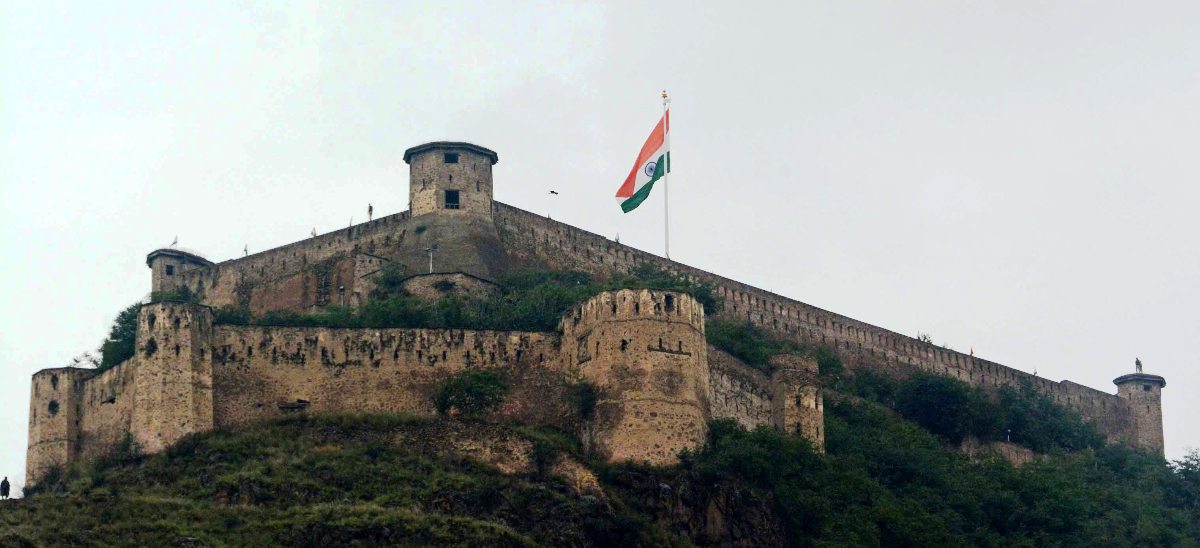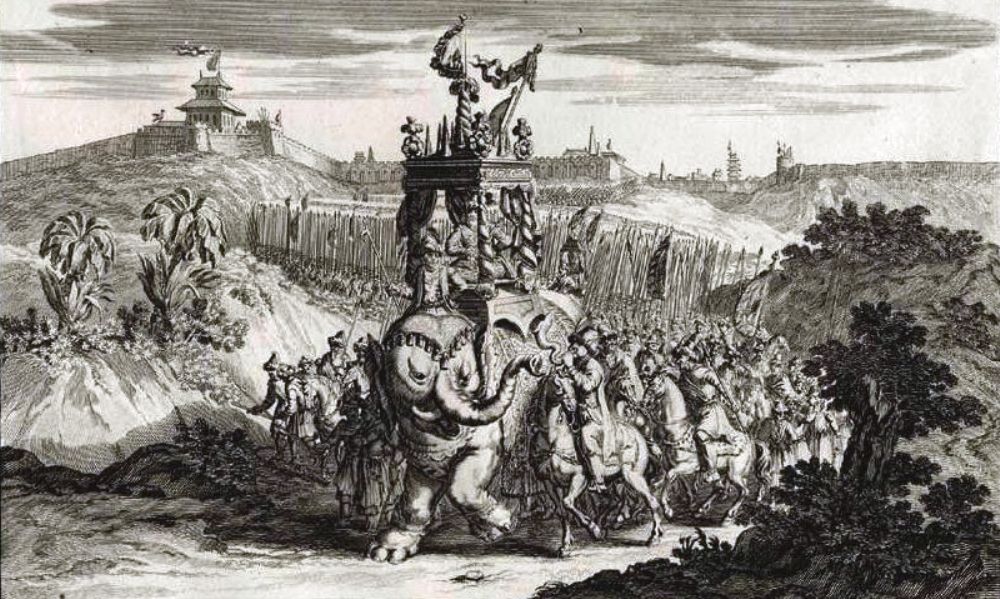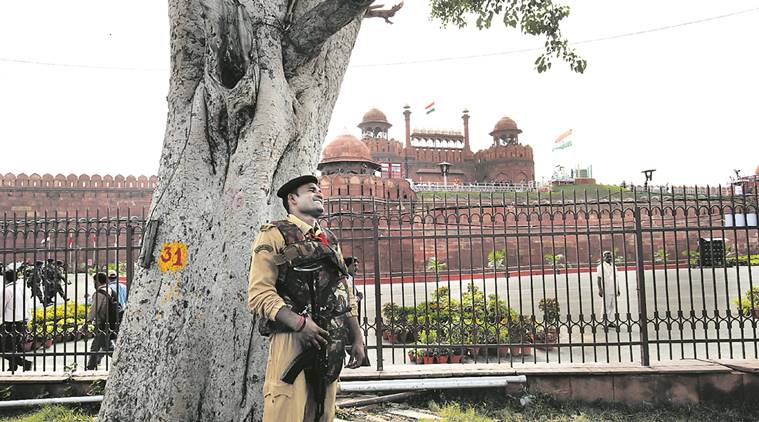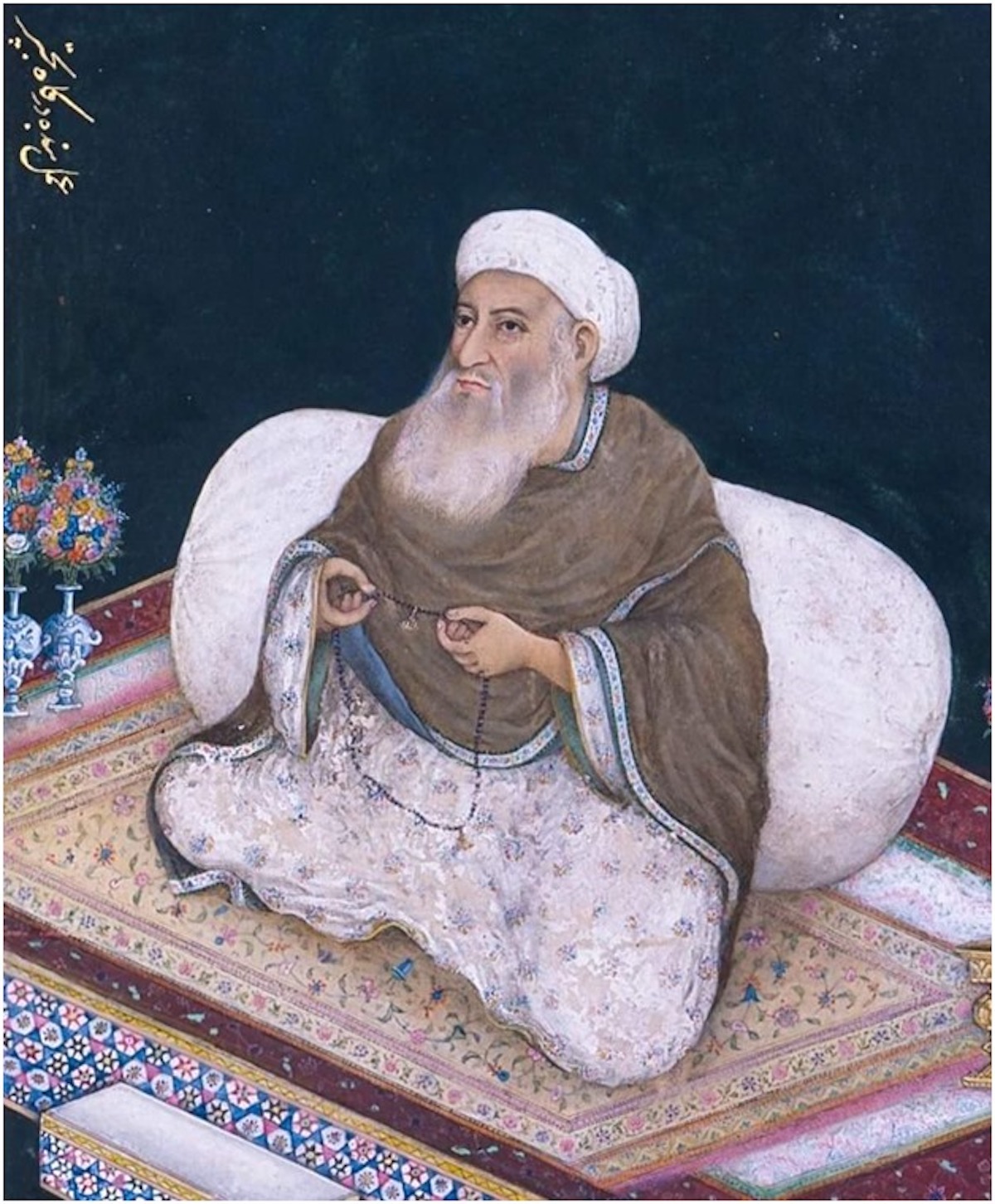by Rita Farhat Mukand
The British at that time were poor but through sheer guile took over India. They studied the cracks, fault lines and weaknesses in India. The last straw was the death of Aurangzeb, the last powerful ruler giving them a road to enter.

Post celebrations of the Republic Day of 2024 in India, immersed in the jubilation of rejoicing, most Indian minds run back to the birth of the Constitution in 1950 and 1947. Veiled to most Indians are the insidious inroads that sailed to sandy shores in ancient India as far back as ancient 1599 when the Portuguese and Dutch had high-level control of the spice trade in the East.
Indian pepper was so precious it was called Black Gold. In 1599, when the Dutch raised the price of black pepper by five shillings, it enraged the British who called it a manipulative form of trade. This triggered them to hold a life-changing meeting on September 24, 1599, at Leadenhall Street in London, where 24 rich merchants gathered to lay their cards on the table. They pointed out in that meeting that the Dutch were monopolising all the trade and decided to establish a new trading firm of their own. They got 125 shareholders who put in a total currency of 72,000 pounds as the starting capital for the company called The Governor and Company of Merchants of London trading into the East Indies.
After this, they needed approval from Queen Elizabeth I as they could not start trading with the world impromptu. After three months on December 31, 1599, the firm was given the Royal Charter from Queen Elizabeth I for 15 years that enabled the company to start its monopoly of trade in all the countries east of the Cape of Good Hope and the west of the Straits of Magellan and the company was not set out to start its business. This empowered the new company to travel over the world and buy spices and other commodities at a low rate and then return to Europe to sell them at higher rates. They got a trading license for import and export.
Since trade was concentrated in the East Asia, its name was changed to East India Company. Queen Elizabeth I was well aware there was thick competition with other countries also trading in this region so she craftily declared that only the East India Company from England and no other countries should come there, threatening that if other countries traded in the same regions, their goods would be confiscated. The Queen authorised the East India Company to print their currency, make their laws in the areas where they traded, own foreign policies, run courts, claim jurisdictions, give punishments, and even create an army.

England was a poor country at that time. With an objective only to make their profits and give also to the shareholders, they were unscrupulously willing to break the rules of their own game, even to the loss of life, or property. Since they had the support of the Queen, they were not liable to the ethics or legalities that a normal company applies.
Since this was a new risky venture and did not have enough funds or workers, they stood near the New Gate Jail in London to get workers from there and they also took workers from the Bedlam Lunatic Asylum. After getting enough workers, they launched a ship to Indonesia towards Maluku Island with absolutely no plans to head to India as there was plenty of spice trade on Maluku Island.
On arriving, to their horror, they found Spanish, Portuguese, and Dutch traders already swarming the streets. Dutch traders and the United East India Company were huge, and their army was massive, so driven out of there, they landed back in England. While they planned to go back to the same area later, they suddenly thought they could try out India.
From 1498, the Portuguese were trading with Indians. In 1608, William Hawkins, diplomat of the East India Company was given a ship called Hector and sailed on to India on August 24 1608, reaching Surat for the first time.
During this time, India was a very rich country, while England was a comparatively poor country. The Mughal Empire was at the zenith of its glory, India was like a super world power at that time known as an industrial powerhouse and trade centre and the world’s textile manufacturer producing 25 per cent of the world’s textiles. India’s economy surged far ahead of the entire European economy perhaps if valued would be worth 21 trillion dollars in today’s economy. A few kingdoms in the South ruled independently.
When William reached Surat, he was surprised to learn that the Portuguese traders who had been there for a long time already with good relations with the Mughals, and learned fast that he would have to follow the rules of the powerful Mughal Empire if he wanted to trade.

At that time, Agra was the capital of India and he had to get all their permissions for trade. He travelled to Agra, met King Jahangir, worked hard at impressing him such as wearing Afghan clothes, spoke in broken Turkish language and gave him a lot of gifts. King Jahangir was unimpressed and did not also want to annoy the Portuguese traders by trading with the British. The Mughals also thought the British were very rude and crude and kept pushing them away while the officials of the East India Company kept trying hard to make inroads into Surat to meet with the Mughal rulers.
On March 24, 1603, Queen Elizabeth I died and on the same day, King James was pronounced as King. The East India Company did not waste time in meeting the King and asked him if he would send an official diplomat, the Mughal rulers would take them more seriously and they could start trading easily with India.
King James agreed on this and on September 18, 1615, sent an official ambassador, Sir Thomas Rowe by ship to Surat. Rowe was sharp and did not make the same mistakes as William Hawkins did. He officially asked for an appointment with King Jahangir where he explained the benefits of trading with England which would benefit India as well. Jahangir understood his point and published a royal order in which the East India Company was allowed to trade in a limited area and in return, the East India Company would give a one-year’s salary. A factory was allowed to be opened in Surat with minimum trading rights.
When Sir Thomas Rowe returned to England, he described that the Mughals were strong thus it was pointless battling with them so advised them that instead of going into the land, to start trading at all seaports, buying commodities from India at cheap rates and sell them to Europe at high rates.
However, once they started to trade, their ambitions soared and they spoke to the Sultan of Golconda and took permission for Andhra Pradesh’s Machilipatnam and opened a second factory. While initially, they had shut doors in most areas, in the first 20 years, they grabbed every opportunity to trade and they expanded their volumes rather fast. They strengthened their strongholds in the areas that they were already trading in as these were developed areas with lots of people settling there.
In 1640, they quickly realised that the Vijayanagara Empire was getting weak and reached out to the Vijayanagara King and gave him a good trading offer which he accepted, convinced that the East India Company would benefit him. The King gave them a 3-mile-long area in a fishing village called Madras Patnam. On getting that area, they built forts giving a reason that there were so many goods that for its security, they needed to keep the stuff in forts. They named this, Fort St George, and then they added more area and called it Madras. They traded there for many years.
In 1662, King Charles II married the Portuguese Queen Catherine. After this, they got an island in India in dowry, which was completely occupied by the Portuguese, called Bumbye, which is now called Mumbai. It made it now very easy for the East India Company to trade in India and this was how Bombay (Mumbai) came under the control of the East India Company.
At that time, the area of Bengal the most fruitful area of India consisted of Odhisa, Bengal, Bangladesh and Bihar. East India Company dreamed of trading in Bengal. The Bengal governor, Shahista Khan was the uncle of the Mughal Emperor Aurangzeb and not fond of the East India Company. The British sent William Hedges who was able to strike a deal with the Mughals and with a few arrangements, trade started at a low level in Bengal.

In 1681, Joshia Child became the director of the East India Company. The Indians increased the tax from two per cent to 3.5 per cent but Joshia Child refused to pay the tax and also threatened to capture Chittagong, but the Governor did not listen to him and imposed the tax in 1686.
Enraged, Joshia Child brought 19 warships, 200 cannons, and 600 soldiers from London and attacked the Mughals in a war. The powerful Mughals inflicted a strong defeat on the East India Company and nearly destroyed the Company. The people who worked for the East India Company were made prisoners in Surat and Dhaka. Their factories, Hougli, Patna, Kasim Bazaar, Masulipatnam, and Vishakapatnam were closed down. Infuriated, Aurangzeb captured the East India’s trade in Bombay.
However, unflaggingly, the British decided to play humble pie, bowed down, apologised and even fell at the feet of Aurangzeb, depicted in a French painting. This groveling went on for some years, and the Mughals who were getting tax money from the trade relented in 1690 but charged the Company with a fine of Rs 1.5 lakh. After this, for many years, the Company traded quietly with India, waiting for their opportune moment.
In 1707, Aurangzeb died and after his death, the Mughal Empire became very weak and a series of emperors kept changing. In 1717, the Mughal Emperor Farooq came on the throne and the East India Company was still desperately trying to trade with Bengal, the hub of prosperity. They frantically started to send Emperor Farooq expensive gifts to lure him. In a mystical twist of fate, William Hamilton, a surgeon in the East India Company cured King Farooq of a disease which won Farooq’s heart.
On the request of the East India Company, King Farooq sent an order to the Governor of Bengal that the East India Company would commence free trade meaning the imports and exports would not be taxed separately and only be taxed annually which was Rs 3000 (Dastak). The Chief of the Factory of the East India Company also got permission for their goods not to be checked and they could transfer it anywhere. While the Governor of Bengal did not like this, he was forced to comply with King Farooq. All this weakened the Mughal Empire and the Marathas and Sikhs started attacking the Mughals.
In 1756 the old Nawab died and, the new Nawab Siraj-ud-Daulah was tougher, disturbed by the British aggressive activities attacked the East India Company’s fortress. The British took advantage of Siraj’s strained relations with his commander-in-chief, Mir Zafar, who betrayed Nawab Siraj-ud-Daulah and got him defeated. After this victory, the British made Mir Jafar a puppet king. They kept fining the Indian kings for their wars blaming them for their foolishness to fight while complaining about the expenditures they had made for useless wars. The Indians had to pay the British from the treasury or the tax revenue system and threatened if those terms were not met, they would take over the entire tax revenue system.
After the Battle of Plassey, the Britishers understood that only political control was real control as they got to keep the entire tax money to themselves and could dictate the terms of trade as they wanted. They got the upper hand, enrolled the local people into their army and added more soldiers from England as well. Rolling in Indian money, it was easy to bribe local Indian kings in their regions and win them over to their side and most of India was under them.
In 1764, the Nawab of Bengal came under a lot of pressure from the local people because the East India Company was extracting heavy taxes from the people of Bengal and when they united to fight the British, they lost in the Battle of Buxar.
In 1765, in the Treaty of Allahabad, Robert Clive declared himself as governor of Bengal and Commander of Chief. Along with this, East India Company kept all the Diwani rights meaning all the revenue of Bengal would go to the East India Company.
During the 1770, drought in Bihar and Bengal, 70 lakh to 100 lakh people died and the main reason for this was the aggressive policies of the East India Company which even took taxes from the living for the dead people. The British did not give food to the Indians and kept the leftover wheat with themselves. While Bengal was a prosperous region, the people died from the drought due to the loot of the British which left the poor people hungry. After looting India, they would take all the goods and money and transfer it to Britain and start to get more powerful.
While North India came under British control, their greed was growing and they started scheming how to take over trade in the South of India. There was already a robust trade going on in Mysore with the French, at the seaside Malabar Coast and the Mysore Kings controlled this. King Hyder Ali and his son Tipu Sultan did not allow an inch of activity of the East India Company within their territory.
There was a war between the Mysore Kingdom and the East India Company. In 1783, Tipu Sultan was ultimately killed by the British who stole 2 million Euros worth of Tipu Sultan’s treasure, an estimate of around Rs 1800 crore worth of gold, jewellery, and valuable items.
In 1803, the Company took the Mughal capital of Delhi. With multiple wars between the Maratha Empire, they took over the Maratha Kingdom and the Sikh Empire. In 1847, they introduced the Doctrine of Lapse stating that if any Indian ruler died, that kingdom automatically goes to the East India Company if there are no male heirs. With this, kingdoms like Udaipur, Jhansi, and Awadh came under the East India Company.
Not satisfied with all the loot from India, they started sending India’s foreign export earnings to London. There was no money for India to start any factories, technologies, or trade because their treasuries were empty. India could not modernise itself because the Britishers drained India dry. Britain gained wealth from trading with India which they used in part to fund the Industrial Revolution.
After looting money from India, Britain invested in North America and Europe building railways, roads, and factories. During the era of British colonialism in all the wars they fought, including World War I and World War II, they made India pay for their wars depicting it as a debt. After this, they kept taking revenue and interest from this “debt”.
While East India Company created cracks in India, insidiously snaking in, they caused rumblings in England too. Getting prosperous from India, they increased the proximity of the British Parliament and Robert Clive started buying the British MPs, and bribing them. They started to run many projects with the government haughtily dictating the rules. The British government got the gist of their power-hungry games and initiated a Parliamentary investigation on the Company, slashed a case on them for “insider trading” and bribery cases got the East India Company removed.
In 1858, the British Government brought the Government of India Act after which they made India a part of the British Empire. The East India Company robbed India in a crafty manner with fake documents, fraud, bribery and threats and even killed the people they made alliances with. Bizarrely, the British Government brought down the East India Company using their mendacious tactics.
Indian economist, Ustad Patnaik estimated that the British looted 45 trillion dollars from India in 200 years. Today, Britain’s GDP is only 3 trillion dollars. Today, while the West speaks of free trade, free trade could be a dangerous venture to strangle another nation while prospering another. It is uncanny that a District Administrative officer is still called a collector, the same term for Britain who used to extract taxes to the point of leaving Indians in starvation. The modern capitalist global system is based on this system of tough taxation of the poor.

Interestingly, the rule of a nation started with just a crumbling company too, a private company that never started with any ambitions to rule India, but rather to stay afloat and survive among its Dutch and Portuguese competitors. India seemed to be the last ray of hope to keep their dying company alive. The British at that time were poor but through sheer guile took over India. They studied the cracks, fault lines and weaknesses in India. The last straw was the death of Aurangzeb, the last powerful ruler giving them a road to enter.
They took advantage of the disunity of the kingdoms, played the game of divide and got the kingdoms to crumble, gave gifts, bribes and bought over kings. A private company of just 125 people starting with only 70,000 pounds made India its slave within 200 years, through patience, cunning and deceit. The same Company was bought by an Indian, Sanjeev Mehta in 2005.
East India Company proves you do not have to start with a lot of wealth to be a master of a game, just cunning enough to ruthlessly rule another nation or your nation. Give the devil a finger and he will take your whole hand, as the old saying goes.
(The author is an independent writer. Ideas are personal.)














